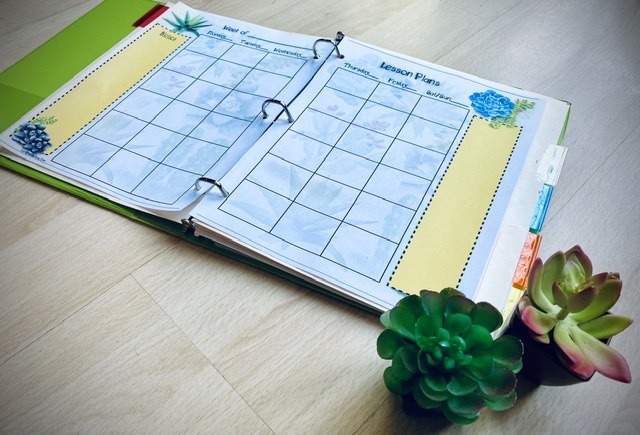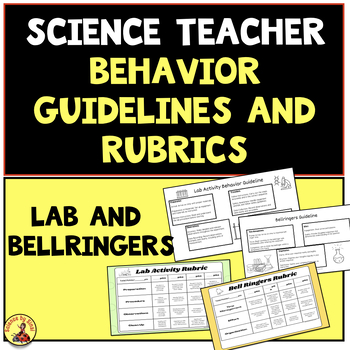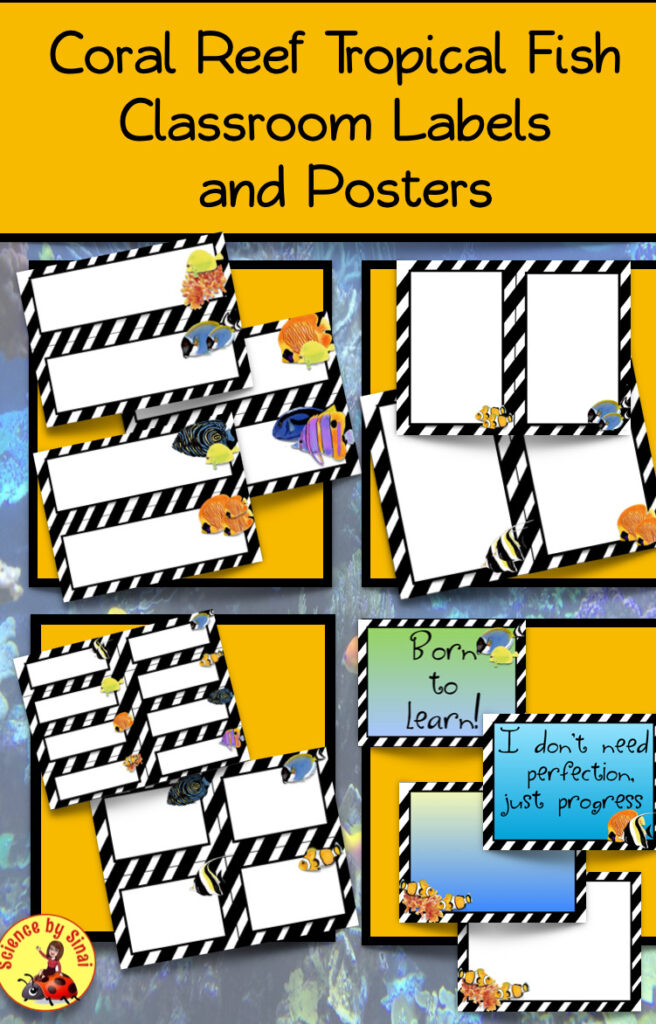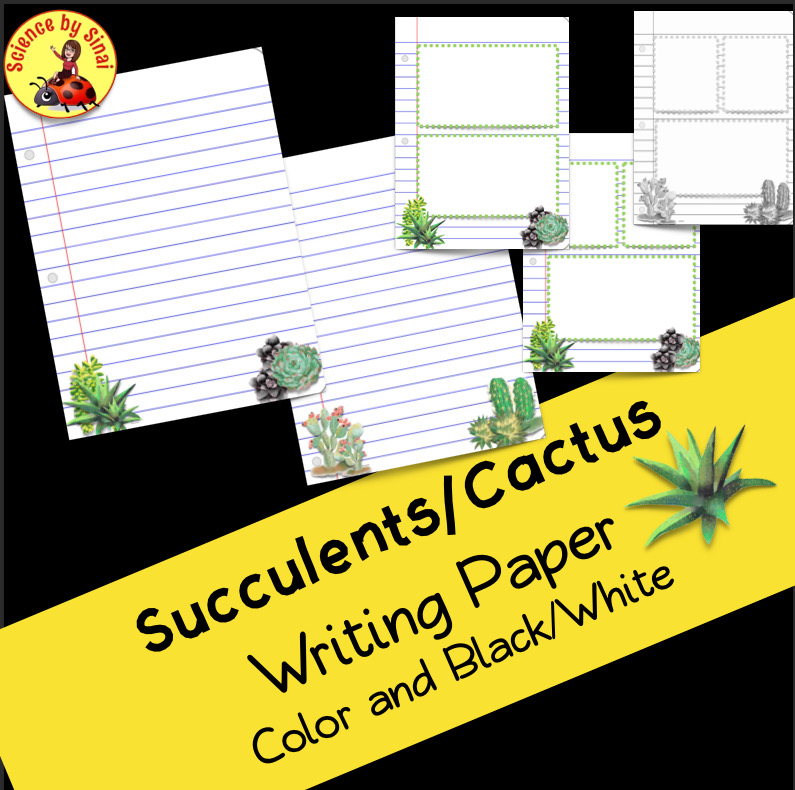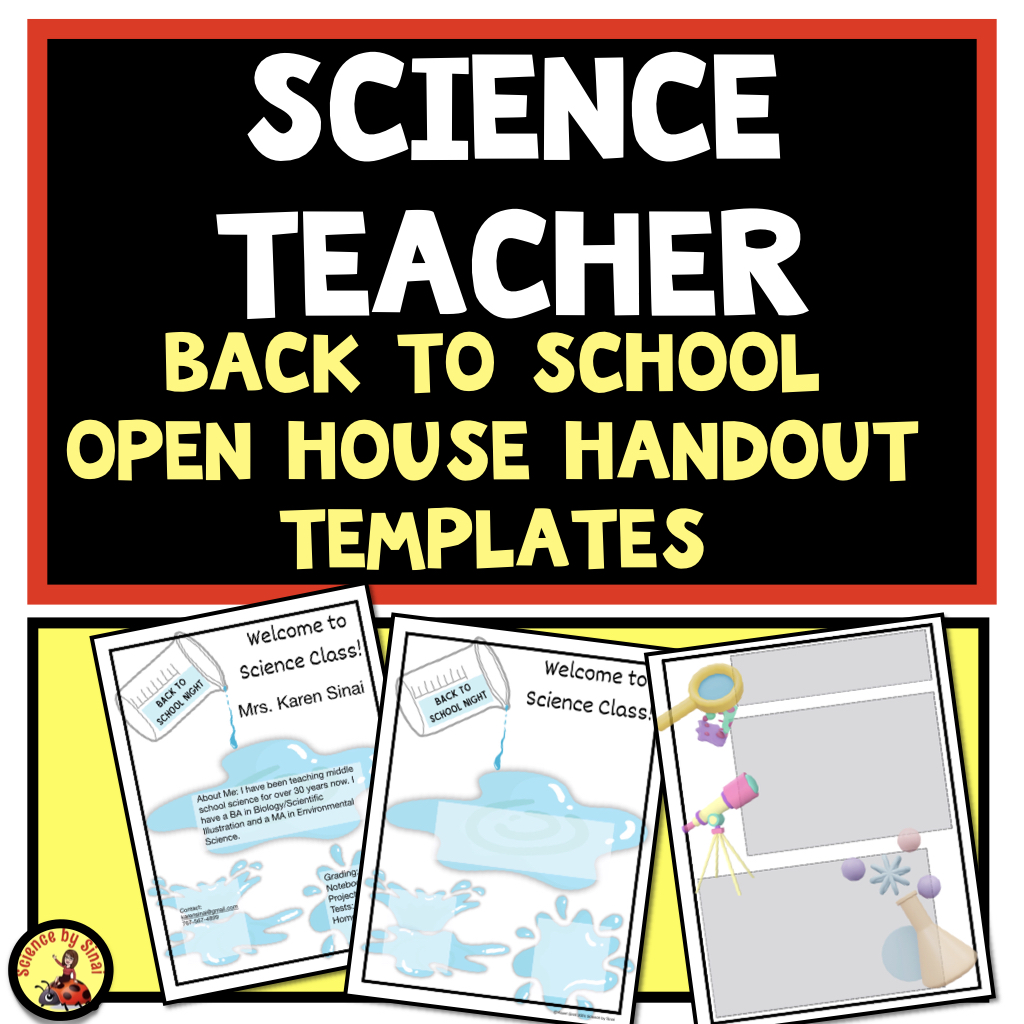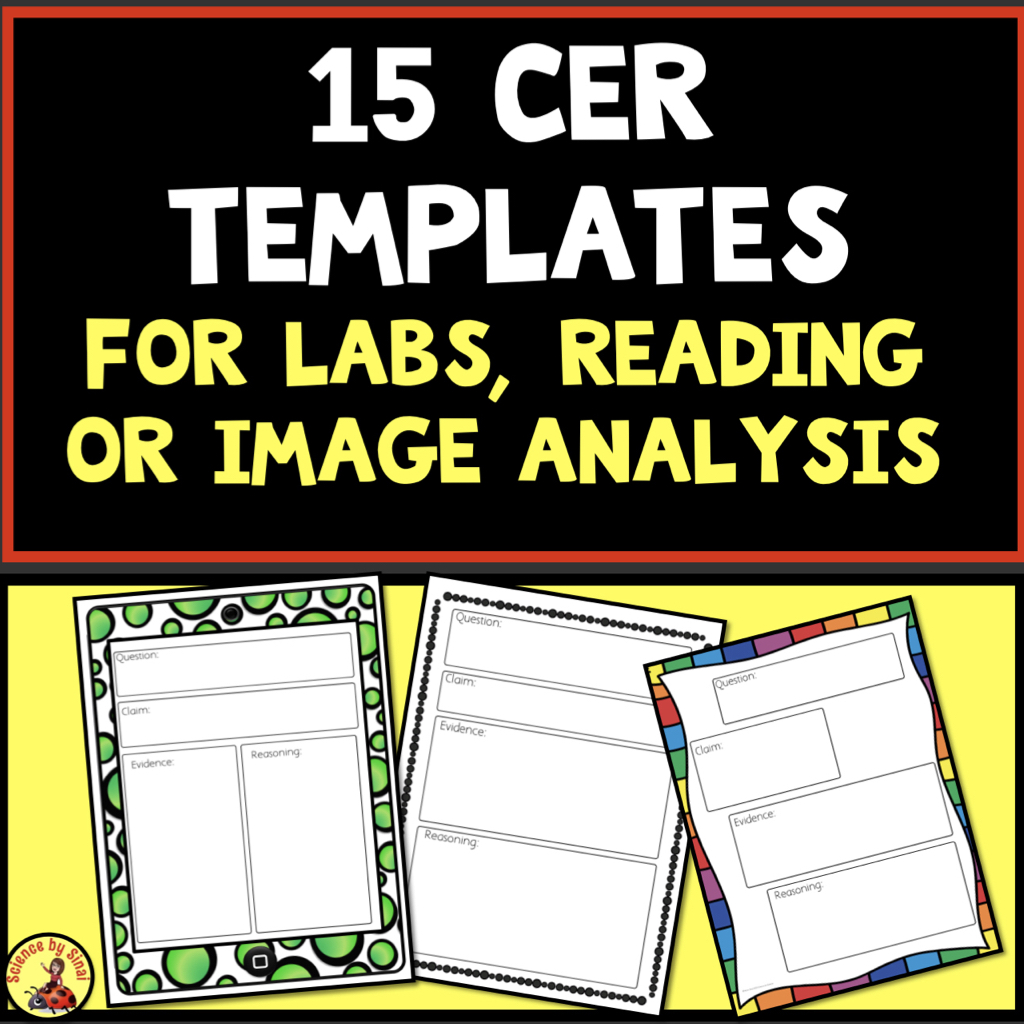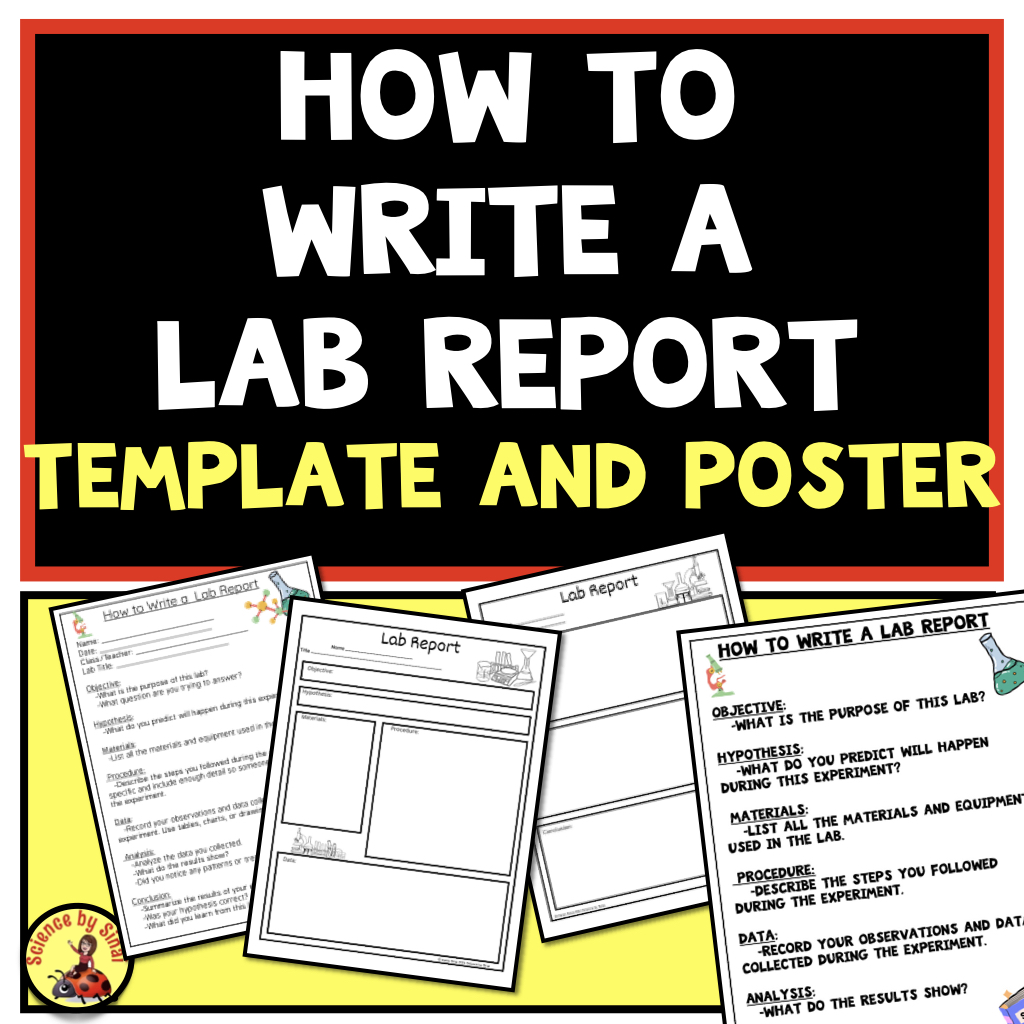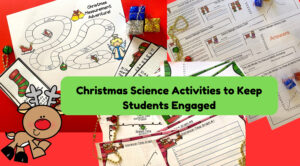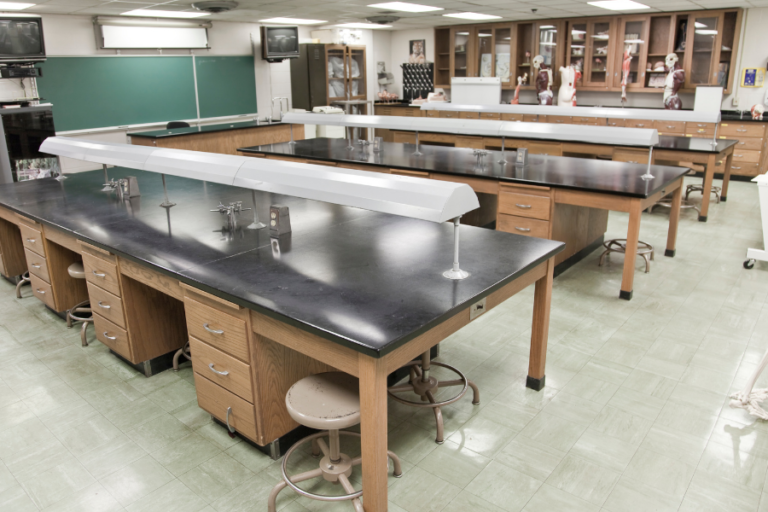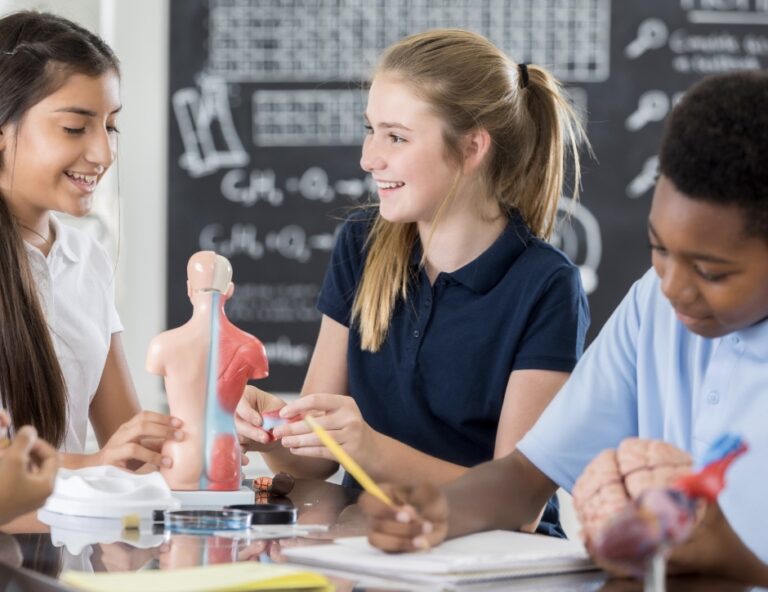Back to School Essentials: Middle School Science Teacher Starter Kit
What’s in a middle school science teacher starter kit? Tons of saved time!
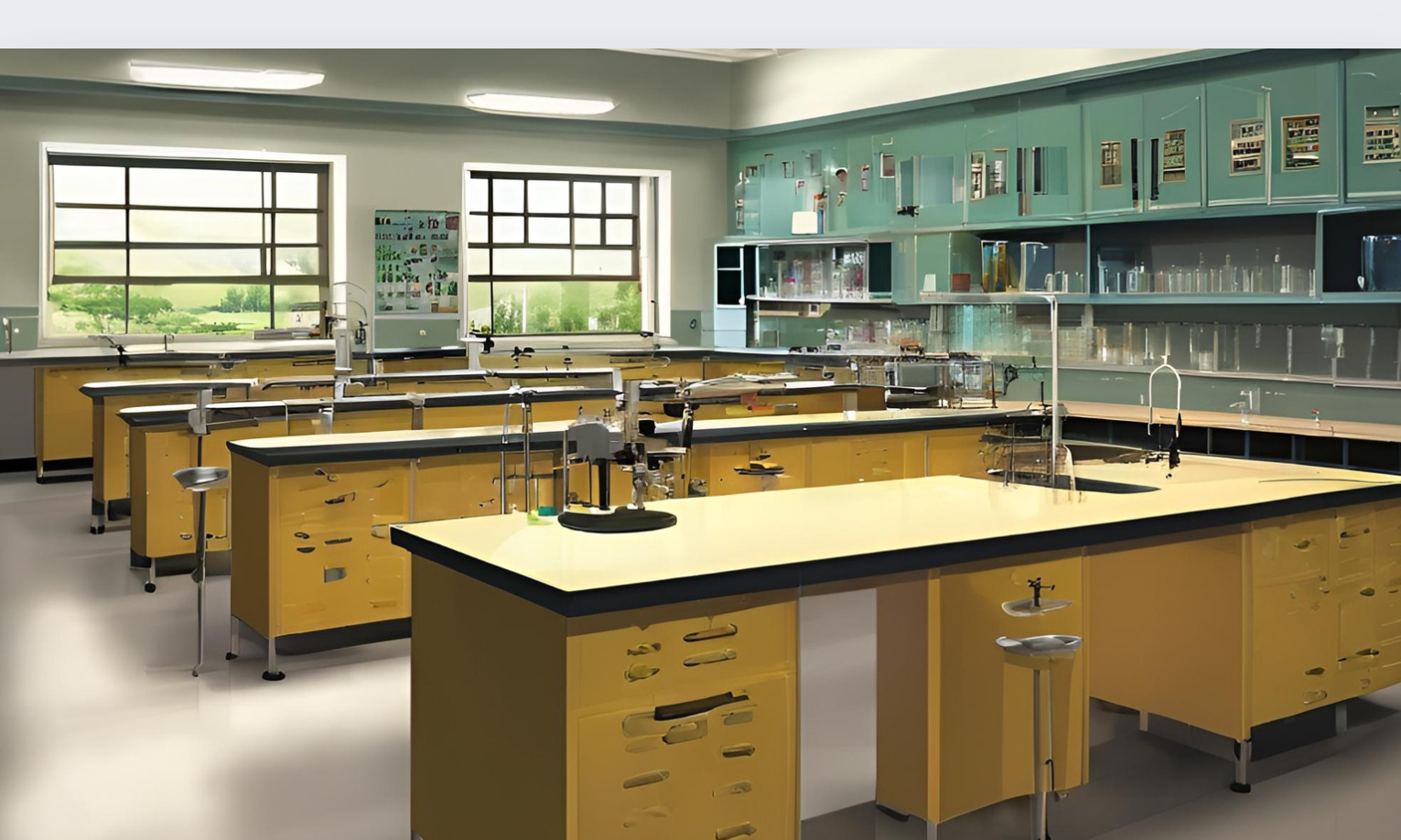
Back to School Essentials: Middle School Science Teacher Starter Kit
July 2024
How nice would it be to have 25 middle school science teacher ready-to-go resources to start the year??
Let’s go through what is included!
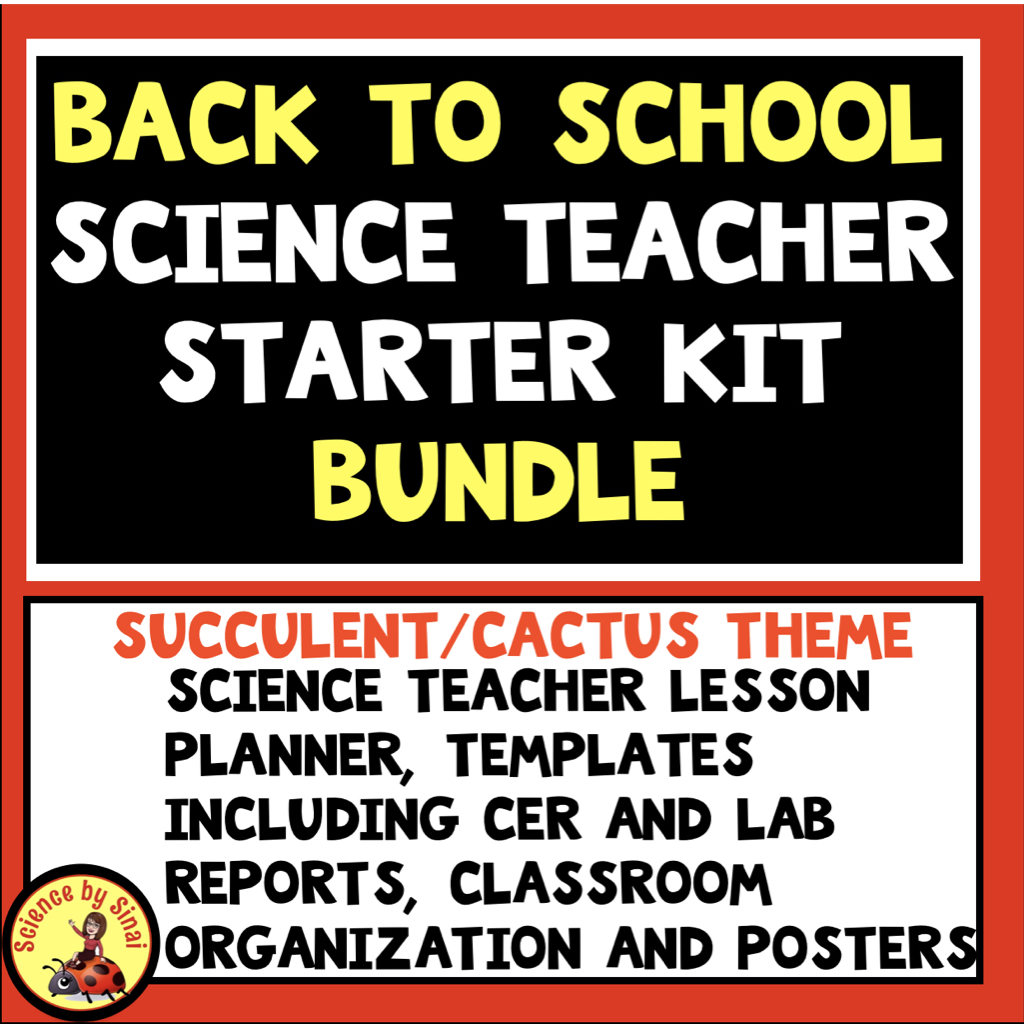
#1 Science Teacher Lesson Planner
My lesson planner is tailored to the different needs of a science teacher. Science teachers deal with doing labs while having cabinets, drawers and closets full of inventory to keep organized. A lot of us teach multiple science classes each day and also need a tracking journal. The planner also includes all the usual useful teacher forms. Check out my blog post about my planner called A Lesson Planner Just For Science Teachers
#2 Teacher Journal Templates
Keeping a teacher journal is important for reflection and growth. These 12 templates also include writing prompts to get you started. Please see my blog post called 7 Reasons Why You Should Keep A Teacher Journal
#3 How to Succeed in Science Class
This is a letter from you, the teacher, that you can send out to students to help them learn how to succeed in science class. We cannot make the assumption that students understand how to organize their materials, study for tests and plan projects. There is a poster included, that accompanies the letter, so that you can keep it up in your classroom throughout the year.
#4 Lab Behavior and Bellringer Procedure Guidelines
I strongly believe in outlining expectations and procedures at the beginning of the school year along with keeping them posted throughout the room. Students thrive on organization and understanding how to succeed. These are behavior guidelines and rubrics for both lab activities and for bellringer procedures. Please check out my beginning of the year post called First Day of School in Middle School Science.
#5 Posters and Labels for Your Classroom Decor
Middle school teachers enjoy decorating their classrooms but they don’t want clipart and designs aimed at younger students. These bold dramatic labels and posters come in three different themes of succulents/cactus, tropical fish or butterflies.
The posters also coordinate with the science teacher planner along with other items in the starter kit.
#6 Growth Mindset Posters
Positive inspirational statements hung around the classroom really do help students. I’ve included 20 posters that coordinate with one of the three themes of the starter kit.
#7 Writing Paper With Multiple Layouts
There are so many occasions where we want the students to write in science class. To show that we are proud of their writings, it is nice to display them in the hallway or throughout your classroom. A little extra touch is having the writing paper match the theme of the classroom. Having the nicer paper also gives the students a little bit more pride in their work.
#8 Chemical Elements Posters-“Born to Learn”
Using science themed posters can make your room more interesting. This resource uses chemical elements from the Periodic chart to spell out “BORN TO LEARN”. I also have others in my store on Teachers pay Teachers.
#9 Classroom Job Cards
I am a big advocate of students having jobs in the classroom. The students live in the classroom for the length of your class every day, so they should take ownership. These job cards also match the theme of the classroom and you can add all sorts of tasks for the students.
#10 CER Bulletin Board Set
Anybody who follows my blog knows that I am a big fan of CER. I like to have a bulletin board in the classroom that reminds the students about the CER steps of claim, evidence and reasoning. This also comes coordinated with the theme.
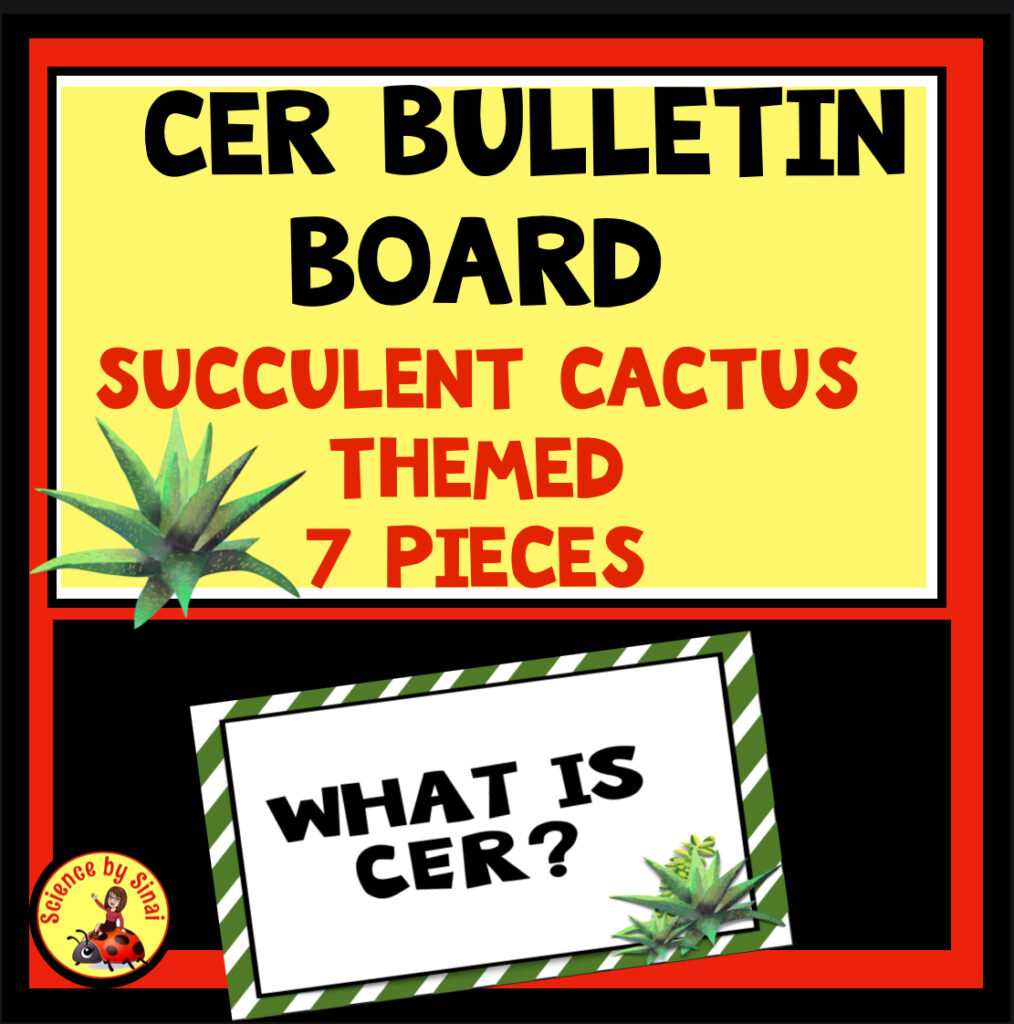
#11 Science Teacher Back-to-School Open House Handout Templates
As part of the science teacher starter kit you will have templates for Back to School night. You can give parents a bit of information about yourself, your syllabus, major projects and perhaps your grading method. In this resource there are three handouts with science themes with two pages each. I do prefer a double sided handout with lots of information for parents. You simply edit these by adding your own text boxes.
#12 Lab Report Templates
Lab reports become much more interesting and fun when the students get to choose their own templates. There are four different designs for them to choose from with a variety of science clipart and colorful borders. I originally designed these for a digital science notebook but they can easily be printed out and utilized.
#13 Bellringer Templates
We all know how the first three to five minutes of class are critically important and a lot of us are required to do bell ringers by our districts. By having an interesting way of keeping track of the bellringers, it can make the students more invested. Here are six different templates where students can write the answers to quick quizzes, sample test questions, CER image prompts, sentence finishers etc.
#14 CER Templates-15
Once again, when students are given a choice for which templates they use, they tend to be more invested in the project or assignment. Here are 15 CER graphic organizers that are in the 8 ½” x 11” format.
#15 CER Templates-16
Here are 16 more CER graphic organizer templates that are in full slide layout. Again, they can be used in digital science notebooks or printed out.
#16 Student Journal Templates
It is good practice for students to reflect and analyze. Having a Mindfulness Journal for writing can be very therapeutic and inspiring. I like to tell the students that they are “recording their history” and that they will love going back and reading their journal entries later. I have included several writing prompt suggestions to get them started writing.
#17 Scientific Method Review Activities
It is important to review the scientific method each year and here are two real world reading passages that the students interpret into graphic organizers. The stories depict the scientific method process and students pull out the hypothesis, procedure, results etc.
#18 How to Write a Lab Report
Not all labs need to have a lab report, but when you do ask it from the students we cannot assume that they understand how to pull together the information from a physical activity.
Encourage critical thinking and understanding by having the students analyze and draw conclusions from the hands-on activity that you just completed. There is a hand out with writing prompts to get them started. Students then use a two page template which makes it so much easier for you to grade! There is also a poster to hang in your room for the students to use as a reference.
#19 Growth Mindset Student Worksheet
As you hang your growth mindset posters around the room, it can be very worthwhile to have the students look through the different mindset student statements to start a discussion. There is also a graphic organizer for students to write their own experiences.
#20 CER Image Writing Prompt Bellringers
I use CER science image writing prompts as bell ringers all the time and here are 4 images with graphic organizers as practice. The students look at the photograph and use critical thinking to come up with a claim, three pieces of evidence and then do a reasoning paragraph.
#21 Ecology Unit Pacing Guide
Pacing guides are great way to keep yourself on track throughout the school year. Ecology is a big part of the life science taught in middle school as part of MS-LS2-2, MS-LS2-3, MS-LS2-4, MS-LS2-5 and MS-ETS1-2. This covers the following topics:
- Matter and Energy in Organisms and Ecosystems
- Abiotic and Biotic Factors
- Introduction to Food Webs
- Food Chains
- Creating Classroom Food Webs
- Feeding Behaviors-Herbivores, Carnivore and Omnivores
- CER Ecosystem Stories
- STEM Food Chain Rube Goldberg Project
- Interdependent Relationships
- Symbiosis Activities Including a STEM Project
- Invasive Species Introduction
- Invasive Species Research Project
- Invasive Species and Food Web Activities
- Population Changes Based on Events
- Biodiversity Games
- Design a Water Filter STEM Project
- Excess Plastic Packaging Lab- Human Impact
#22 Human Impact Unit Pacing Guide
As part of the NGSS standards of MS-ESS3-3, MS-LS2-3 and MS-LS2-4, students learn about human impact on the environment which is great for leading up to Earth Day. This covers 2 to 3 weeks.
- Interconnected Food Webs
- Abiotic and Biotic Components
- Manmade or Natural Events That Affect Food Webs
- Water Filters
- Use Pond Microorganisms as Bioindicators of Water Pollution
- Determine the Ratio of Product to Packaging in Terms of Municipal Waste
- Go on a Recyclable Plastic Scavenger Hunt
- Graph the Trips of the Family Car to Study Air Pollution
- Invasive Species Research Project
- Food Web Invasive Species Dice Roll Games for the Desert, Rainforest and Deciduous Forest
- Biodiversity Games on the Desert and Rainforest
#23 Newton’s Three Laws of Motion Unit Pacing Guide
Here is a 2 to 3 week unit covering MS-PS2–1 and MS-PS 2-2.
- Three Laws Motion PowerPoint with 2 Differentiated Workbooks
- CER Laws of Motion Image Writing Prompts
- Laws of Motion Project Choice Board
- Force Diagrams Vector Arrows Activity
- Resultant Force Graphing Activity
- Car Safety Features and Newton’s First Law Reading Passage with Questions
- F=ma Practice Worksheet
- Collision Lab with Newton’s Third Law
- 4 Types of Friction PowerPoint with 2 Differentiated Workbooks
- Types of Friction Coloring Pages
- Newton’s Laws Coloring Pages
- Laws of Motion Exit Tickets
#24 Motion, Speed and Interpreting Motion Graphs Unit Pacing Guide
Here is a pacing guide for a 2 to 3 week unit on motion, speed and interpreting motion graphs such as distance-time graphs and speed-time graphs plus average speed. This covers NGSS MS-PS2-2 and MS-PS3-1 Topics covered:
- What is Motion?
- What is Speed?
- Calculating Speed
- How Mass Affects Speed
- Reading and Interpreting the Slopes on a Distance-Time Graph
- Reading and Interpreting the Slopes on a Speed-Time Graph
- Finding Average Speed Using a Distance-Time Graph
#25 Middle School Chemistry Unit Pacing Guide
This pacing guide covers a 5 to 6 week unit on middle school matter in chemistry and covers the standards of MS-PS1-1, MS-PS1-2, MS-PS1-4, and MS-PS1-5. Topics include:
- Changing States of Matter
- Physical vs. Chemical Changes
- Analyzing Molecules
- Diagramming Chemical Equations-Conservation of Matter
- Kitchen Chemistry Basic Reactions
- Balancing Chemical Equations
- 4 Types of Chemical Reactions
- Labs for Synthesis, Decomposition, Single Replacement and Double Replacement
- Valence Electrons
- Ionic Charges
- Ionic vs. Covalent Bonds
Check out my blog posts called 7 Steps to Teaching Chemistry to Middle School Students and How to Cheaply Teach Chemical Reactions to Middle School
Conclusion
Having 25 ready-to-go resources for your back to school science teacher starter kit is a huge time and money saver! You will be so much more relaxed and organized having everything in one place.
Are you looking for more science resources? Please check out my Teachers Pay Teachers store called Science by Sinai for hundreds of activities. Also, don’t forget to check out my free resource library on this blog!


